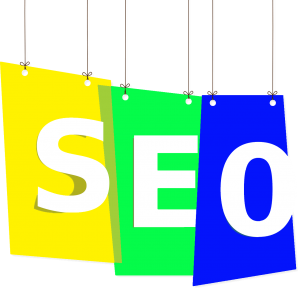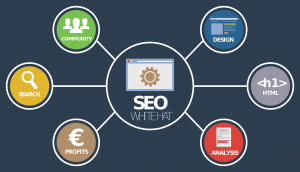How to optimize a webpage for S.E.O.
How to optimize a webpage for S.E.O.
S.E.O. or Search Engine Optimization is a fancy way of sayin that you are applying known rules to improve your webpage’s ranking in the search engines.
Google and the other search engines have all kinds of algorithms to make sure that people using their search engines are getting the most relevant results for their searches.
The search engines do not reveal all their algorithms but some of their employees leak information (maybe on purpose?) and many experienced digital marketers have figured a lot by testing immensely.
Long gone is the time where you could fool search engines by stuffing keywords all over your website. Not only will your site not rank well but it will get penalized.
Older internet marketers have gone through “many slaps” which destroyed their digital businesses overnight as they were using what is called black hat tactics. Such tactics usually involved robotic creation of countless pages stuffed with keywords, loads of robotic linkings and so forth.
It makes sense that the search engines want to offer the most relevant results for a customer. You therefore need to keep your blog or website tight and on topic.
If you are passionate about two very different niches, you need to create two different websites. It makes sense that people interested in digital marketing will leave your website very fast if you are talking about stamp collecting. Unless you have a huge following and have a popular blog about any given subject.
S.E.O. is evolving and what was ranking well yesterday might not even rank high today.

If you do a search for any term, you will see that the top 3 or 4 results are paid ads. The search engines are a billion dollar industry for a reason.
After the ads, comes the “local” results if you are searching for a business type. This is something you want to rank for if you have a business website.
Then either comes what they call the organic results which is the regular websites or blogs. In those results, you have videos and regular pages. If you can rank for both, that is even better.
The websites or blogs that will rank well will be relevant to the search, have lots of relevant links coming in and going out to other relevant sites on the topic. The website will also keep visitors for a longer period. If you rank well but visitors only stay on your site for a couple of seconds, this will penalize your site on the long run.
Websites need to load up fast to rank well.
Websites or blogs need to look good on mobiles and tablets as well as laptops as more and more people are doing searches from their cell phones.
The quality and length of your articles are very important. Some experienced marketers evaluated that the articles and pages that rank the best are between 2000 and 3000 words. You read right. That is a lot of words!
To help the search engines crawl your site, it is highly recommended that you have a sitemap that is automatically updated when you write a page or a post. The search engines are then notified that your site has new content and will rank it better.
As you can see, S.E.O. is a long-term game with changing rules!
SEO Optimizations for Individual Pages:
It is better to focus on one keyword per page. A keyword might be more than one word though like “Search Engine Optimization”.
Many digital marketers recommend trying to rank for longer keywords when you begin as the top spots are taken by well-established sites. For instance, if you try to rank for S.E.O. you are competing with Neil Patel’s website which has thousands of relevant backlinks and very long and super well-written articles.
You are better off trying to rank for “S.E.O. for new mom blogger”. You get the point.
By the way, backlinks are just sites linking to you.
So here are some tips to rank well for a given page on your website or blog:
- Your primary keyword is included in:
- The Page title
- The first 100 words
- A subheading
- Naturally throughout the body. Using synonyms is also a great idea and should come naturally to you. It also reads better for your visitors.
- Your page title is compelling. You should not overthink the title of your page or post and go with what you would type in the search engine to end-up on your page. Such terms as ‘how to” or “what is the best” or a product name followed by the term review. You get the idea.
- If you have a hard time coming-up with a great title, just type in the search engine your main keyword like S.E.O. and Google will suggest many relevant searches!
- Your page description is compelling and contains your primary keyword.
- Your page URL is short and contains your primary keyword. In WordPress take a minute to set-up that your pages will not have weird numbers but will have your title words and therefore your keywords in them. You can set this up once by going into your WordPress dashboard, clicking in Settings, Permalink and choosing Post name.
- Your introduction is short and to the point.
- Your content is formatted so that it’s easy to read.
- Relevant videos are embedded in your content. Try to never use videos directly in your posts as this would slow down your website a lot, something that is penalized in S.E.O. and a big turnoff for your visitors.
- You linked to relevant internal pages.
- Your content is up to date. Adding fresh content regularly is key to ranking well. If you believe what some marketers trying to sell you all those ‘set it and forget it” get rich now products, your site will not rank well.
- Your content is accurate. Linking to authority sites shows that your post is providing lots of value to the reader.
- Your content thoroughly covers the subject. This comes back to having long pages.
- You implemented structured data where appropriate. Having bullet lists and using sparingly bolding, underlining and highlighting might make your site pop more. It also provides a better reading experience for your visitors.
- Snippets are little pieces of texts that sum a subject. They are well-ranked in the search engines so you can have snippets on your site and hope they get picked-up by the search engines. Such snippets would be an “how to” list, a top 5 list, etc. They are little pieces of text that you see on the result page that offer a bitesize info piece at first glance.
- You are using the proper tags. Your keywords is in the title and headers.
- Your images have relevant keywords tags.
